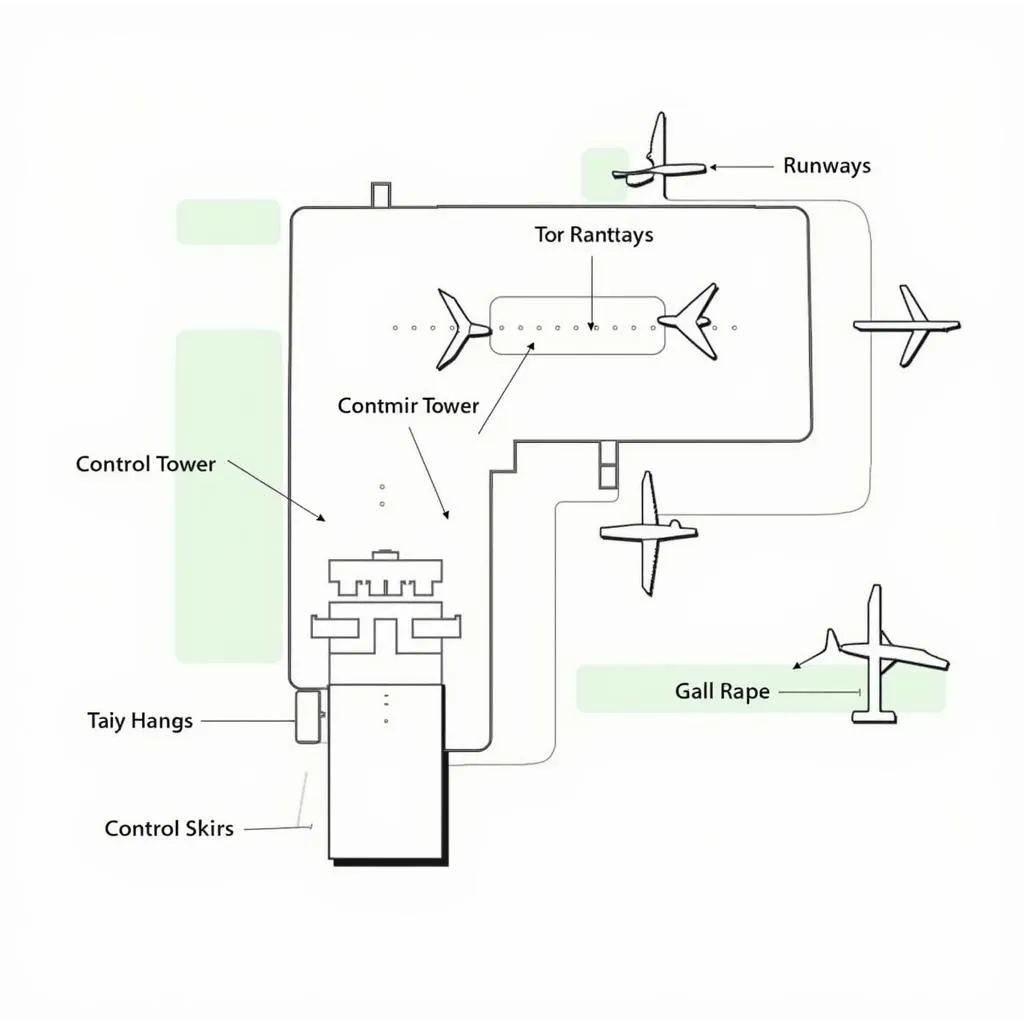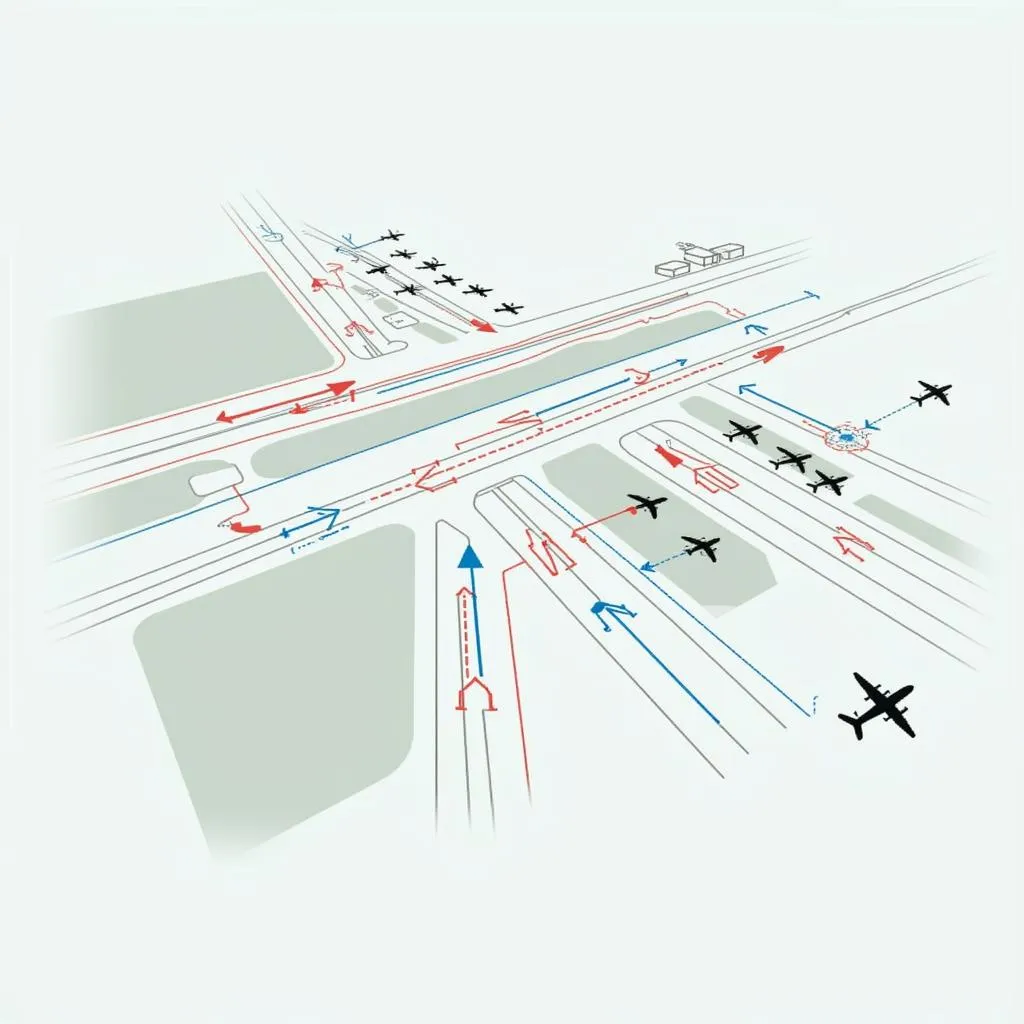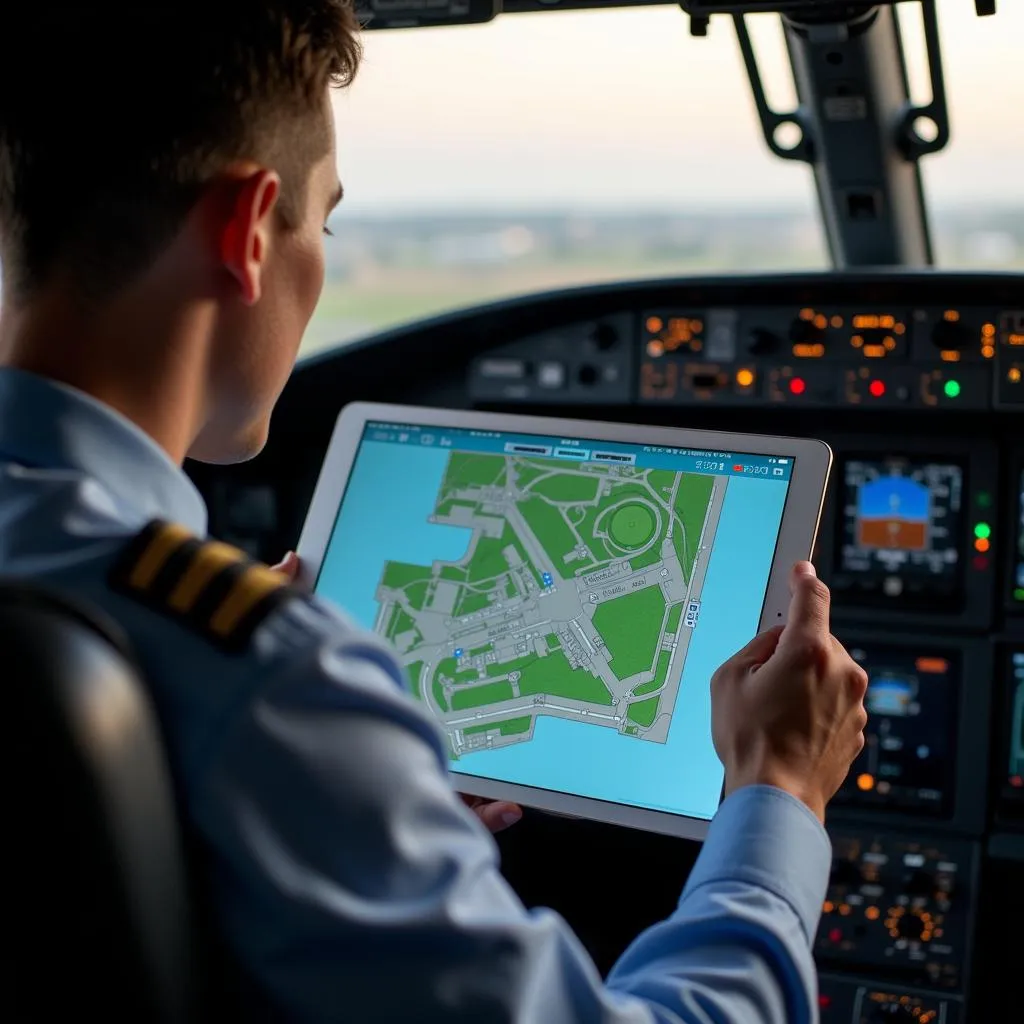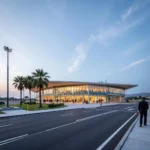Airport Layout Diagrams – these intricate blueprints might seem like a maze of symbols and lines to the untrained eye. However, for those familiar with their language, they offer a fascinating glimpse into the complex world of aviation. These diagrams are essential tools for pilots, air traffic controllers, and airport staff, ensuring smooth and safe operations within the bustling ecosystem of an airport.
Decoding the Symbols: A Guide to Common Elements
At first glance, an airport layout diagram might appear daunting. But fear not, understanding these diagrams is like learning a new language – once you grasp the basic vocabulary, the rest falls into place. Here’s a breakdown of some common symbols:
- Runways: Represented as thick lines, often marked with numbers indicating their magnetic heading.
- Taxiways: Depicted as thinner lines connecting runways to aprons and other airport facilities.
- Aprons: These are the areas where aircraft park, load, and unload passengers and cargo.
- Gates: Marked with specific numbers or letters, these are the points where passengers board and disembark the aircraft.
- Control Tower: Usually depicted as a prominent tower symbol, representing the nerve center of airport operations.
- Hangars: Represented as large rectangular structures, these house aircraft for maintenance and storage.
 Airport Layout Diagram Symbols
Airport Layout Diagram Symbols
Navigating the Tarmac: How Airport Layout Impacts Efficiency
Ever wondered how airports manage the constant flow of aircraft arriving and departing? The answer lies in the meticulous design of the airport layout. A well-designed layout optimizes traffic flow, minimizing delays and maximizing efficiency. Key factors that influence layout design include:
- Airspace Structure: The organization of airspace around the airport dictates runway orientation and flight paths.
- Terrain and Obstacles: Natural features and man-made structures can impact runway placement and overall layout.
- Traffic Demand: The volume of aircraft movements, both current and projected, influences the size and capacity of airport facilities.
- Environmental Considerations: Airport layouts often incorporate measures to minimize noise pollution and environmental impact on surrounding communities.
 Airport Layout Diagram with Traffic Flow
Airport Layout Diagram with Traffic Flow
From Parallel to Intersecting: Types of Airport Layouts
Airports around the world utilize various layout configurations, each with its own advantages and limitations. Some common types include:
- Parallel Runways: Featuring two or more runways running parallel, this layout is ideal for high-traffic airports, allowing simultaneous takeoffs and landings.
- Intersecting Runways: Characterized by runways that intersect at one or more points, this layout is often found in airports with limited space.
- Open-V Runway Layout: This design uses two runways forming a “V” shape, allowing for operational flexibility in varying wind conditions.
The Evolution of Airport Layouts: Adapting to the Jet Age and Beyond
As aviation technology advanced, airport layouts underwent significant transformations to accommodate larger aircraft and increased traffic. The introduction of jet aircraft in the mid-20th century necessitated longer runways and more extensive taxiway systems. Today, airports continue to evolve, embracing innovative designs like:
- Midfield Concourses: These detached terminal buildings connected by underground walkways or automated people movers enhance passenger experience and optimize gate utilization.
- Sustainable Design: Modern airport layouts increasingly incorporate eco-friendly features like solar panels, rainwater harvesting systems, and green spaces.
Airport Layout Diagrams: Essential Tools for Aviation Professionals
For pilots, air traffic controllers, and ground crews, airport layout diagrams are indispensable tools. Let’s delve into how these professionals utilize these diagrams in their respective roles:
- Pilots: Prior to takeoff and landing, pilots meticulously review airport layout diagrams to familiarize themselves with runway assignments, taxiway routes, and potential obstacles.
- Air Traffic Controllers: These aviation guardians rely on real-time displays of airport layouts to track aircraft movements, issue clearances, and ensure safe separation between aircraft.
- Ground Crews: From baggage handlers to fuel truck operators, ground crews depend on airport layout diagrams to navigate the airfield, service aircraft, and coordinate ground operations efficiently.
 Pilot Using Airport Layout Diagram
Pilot Using Airport Layout Diagram
Conclusion: Unlocking the Secrets of Airport Efficiency
Airport layout diagrams, far from being mere technical drawings, are the unsung heroes of seamless air travel. Understanding these diagrams offers a glimpse into the intricate planning and coordination that keep airports running smoothly. Next time you find yourself at an airport, take a moment to appreciate the thought and expertise behind those lines and symbols – they are the invisible threads weaving together the global tapestry of aviation.

